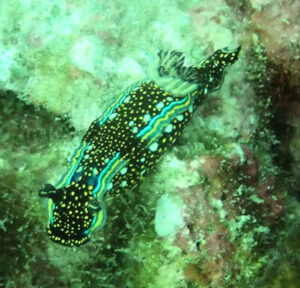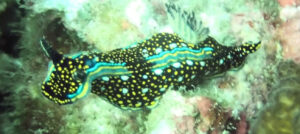Agassiz’s Nudibranch, Felimare agassizii

 Agassiz’s Nudibranch, Felimare agassizii. Underwater photograph taken in Zihuatanejo Bay, Guerrero, December 2019. Photograph and identification courtesy of Maude Jette, Dive Zihuatanejo, www.Divezihuatanejo.com.
Agassiz’s Nudibranch, Felimare agassizii. Underwater photograph taken in Zihuatanejo Bay, Guerrero, December 2019. Photograph and identification courtesy of Maude Jette, Dive Zihuatanejo, www.Divezihuatanejo.com.
Phylogeny: Agassiz’s Nudibranch, Felimare agassizii (Bergh, 1894), is a member of the Chromodorididae Family of Nudibranchs and is known in Mexico as nudibranquio de Agassiz. It was named after the Harvard evolutionary biologist Alexander Agassiz. These organisms are frequently referenced as sea slugs.
Habitat & Distribution: Agassiz’s Nudibranch is found on and under rocks in the intertidal zone to depths up to 18 m (60 feet). They is a resident of Mexican waters of the Pacific but has a limited range being found throughout the Sea of Cortez and along the coast if the mainland south to Guatemala.
Morphology: Agassiz’s Nudibranch is a marine gastropod that displays a rectangular profile and a slightly flattened head. Their body is blue-black in color and their dorsal side is covered with numerous small yellow dots and elongated white oval spots. They have 3 body stripes along the margin, yellow on the outside, narrower navy blue or black in the middle and light green. They have a maximum body length of 7.9 cm (3.1 inches).
Diet: Agassiz’s Nudibranch feeds almost exclusively on demosponges.
Reproduction: Nudibranchs are hermaphrodites that reproduce asexually. Agassiz’s Nudibranch is poorly studied and very little is known about their behavioral patterns.
Synonyms: This species was originally named Chromodoris agassizii and synonyms include Chromodoris aegialia, Glossodoris aegialia, Hypselodoris aegialia and Hypselodoris agassizii.